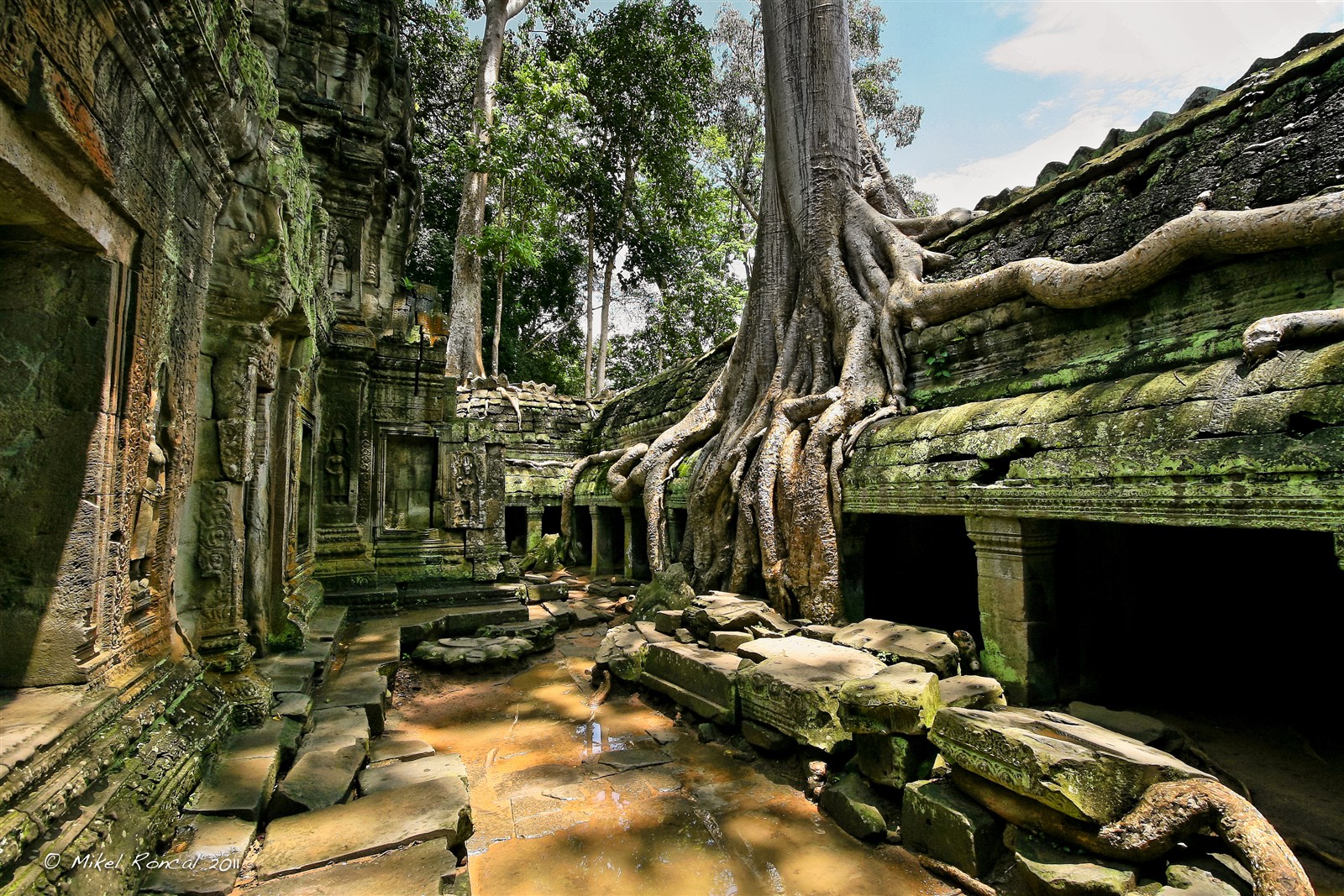Landscape
Ta Prohm BUDDHIST TEMPLE
The eventual Indiana Jones fantasy, Ta Prohm
is cloaked in dappled darkness , its crumbling towers and walls locked in the
deliberate , brawny clinch of huge root systems. If Angkor Wat, the Bayon and
other temples are proof to the talent of the ancient Khmers, Ta Prohm reminds
humand equally of the great fertility and influence of the jungle . We have a
poetic cycle to this admired , with humanity first conquering nature to
promptly create, and natural world once again discovering humanity to
unhurriedly destroy.
Built from 1186 and initially known as
Rajavihara (Monastery of the King), Ta Prohm was a Buddhist temple dedicated to
the mother of Jayavarman VII. Ta Prohm is a temple of towers, close courtyards
and narrow corridors. Ancient trees tower overhead, their leaves filtering the
daylight and casting a greenish pall over the whole scene. It is the closest
most of us will get to feeling the magic of the travellers of old.
Phnom Bakheng HINDU TEMPLE
About 400m south of Angkor Thom, that hill’s
main draw is the sunset view of Angkor Wat, although this has turned into
something of a show , with hundreds of travellers jockeying for space. The
temple, built by Yasovarman I (r 889–910), has five tiers with seven levels.
Preah Khan BUDDHIST TEMPLE
(Sacred Sword) The temple of Preah Khan
(Sacred Sword) is one of the largest complexes at Angkor, a maze of vaulted
corridors, fine carvings and lichen-clad stonework. Built by Jayavarman VII, it
covers a very large area, but the temple itself is within a rectangular wall of
about 700m by 800m. Preah Khan is a genuine combination temple, the eastern
entrance dedicated to Mahayana Buddhism, with equal-sized doors, and the other
cardinal directions devoted to Shiva, Vishnu and Brahma, with successively
smaller doors, emphasising the unequal nature of Hinduism.

Preah Neak Poan BUDDHIST TEMPLE
Another late-12th-century work of – no
surprises here – Jayavarman VII, this little temple just east of Preah Khan has
a wide square pool surrounded by four smaller square pools, with a circular
‘island’ in the middle. Water once flowed from the central pond into the four
peripheral pools via four ornamental spouts, in the shape of an elephant’s
head, a horse’s head, a lion’s head and a human head.
Roluos Group HINDU TEMPLE
The monuments of Roluos, which served as the
capital for Indravarman I (r 877–89), are among the earliest big eternal
temples built by the Khmers and mark the dawn of Khmer classical art. Preah Ko,
dedicated to Shiva, has elaborate inscriptions in Sanskrit on the doorposts of
each tower and some of the best surviving examples of Angkorian plasterwork.
The city’s central temple, Bakong, with its five-tier central pyramid of
sandstone, is a representation of Mt Meru. Roluos is 13km southeast of Siem
Reap along NH6.